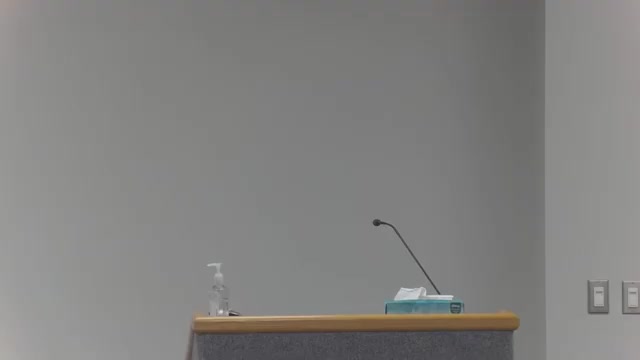Zoning Board Discusses Variance for East-West Duplex Development Plans
September 26, 2025 | Big Rapids, Mecosta County, Michigan
This article was created by AI summarizing key points discussed. AI makes mistakes, so for full details and context, please refer to the video of the full meeting. Please report any errors so we can fix them. Report an error »

In a recent meeting of the Zoning Board of Appeals in Big Rapids, Michigan, discussions centered around a proposed variance for a residential property that has raised significant interest among local stakeholders. The meeting, held on September 25, 2025, highlighted the complexities of zoning regulations and their implications for community development.
The primary focus of the meeting was a request for a variance that would allow for a unique housing arrangement on a smaller lot, which has been a point of contention due to its nonconforming size. Board members engaged in a detailed dialogue about the layout of the proposed housing units, which would consist of two families living in a side-by-side configuration, each with distinct entrances and living spaces. The discussion emphasized the importance of maintaining privacy and adequate outdoor space for residents, with suggestions for privacy fences and individual patios to enhance the living experience.
A key aspect of the variance request was the acknowledgment of the property's unique circumstances. Board members noted that the lot is smaller than typical zoning requirements, which has historically limited development options. The previous structure on the property had deteriorated and was demolished, prompting the current proposal. This context raised questions about how the proposed variance would not only benefit the applicant but also align with the broader interests of the neighborhood.
Additionally, the board discussed the potential for accessory structures, such as sheds, to provide residents with necessary storage while adhering to zoning regulations. The conversation reflected a commitment to ensuring that the development would not detract from the community's aesthetic appeal, with members expressing a desire for well-maintained properties that contribute positively to the neighborhood.
As the meeting progressed, it became clear that the board was weighing the benefits of the proposed variance against the need to uphold zoning standards. The discussions underscored the delicate balance between fostering development and preserving community character, a challenge that many municipalities face.
In conclusion, the Zoning Board of Appeals' meeting highlighted critical considerations regarding residential development in Big Rapids. The outcome of the variance request will likely set a precedent for future projects in the area, as the board continues to navigate the complexities of zoning laws and community needs. Stakeholders will be watching closely as the board deliberates on this matter, with implications that could resonate throughout the community for years to come.
The primary focus of the meeting was a request for a variance that would allow for a unique housing arrangement on a smaller lot, which has been a point of contention due to its nonconforming size. Board members engaged in a detailed dialogue about the layout of the proposed housing units, which would consist of two families living in a side-by-side configuration, each with distinct entrances and living spaces. The discussion emphasized the importance of maintaining privacy and adequate outdoor space for residents, with suggestions for privacy fences and individual patios to enhance the living experience.
A key aspect of the variance request was the acknowledgment of the property's unique circumstances. Board members noted that the lot is smaller than typical zoning requirements, which has historically limited development options. The previous structure on the property had deteriorated and was demolished, prompting the current proposal. This context raised questions about how the proposed variance would not only benefit the applicant but also align with the broader interests of the neighborhood.
Additionally, the board discussed the potential for accessory structures, such as sheds, to provide residents with necessary storage while adhering to zoning regulations. The conversation reflected a commitment to ensuring that the development would not detract from the community's aesthetic appeal, with members expressing a desire for well-maintained properties that contribute positively to the neighborhood.
As the meeting progressed, it became clear that the board was weighing the benefits of the proposed variance against the need to uphold zoning standards. The discussions underscored the delicate balance between fostering development and preserving community character, a challenge that many municipalities face.
In conclusion, the Zoning Board of Appeals' meeting highlighted critical considerations regarding residential development in Big Rapids. The outcome of the variance request will likely set a precedent for future projects in the area, as the board continues to navigate the complexities of zoning laws and community needs. Stakeholders will be watching closely as the board deliberates on this matter, with implications that could resonate throughout the community for years to come.
View full meeting
This article is based on a recent meeting—watch the full video and explore the complete transcript for deeper insights into the discussion.
View full meeting
